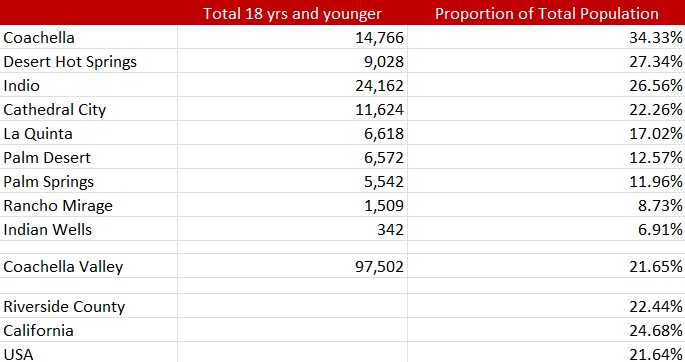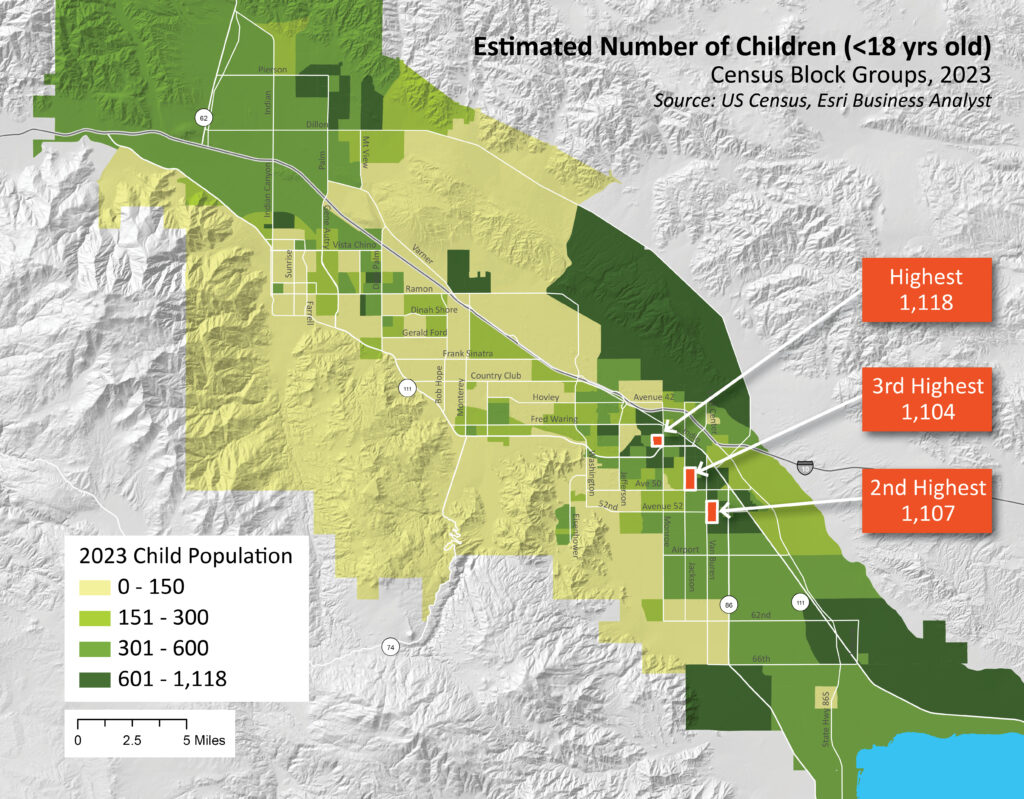In a recent Desert Sun article titled Palm Springs is an oasis for tourists, but not for the area’s majority low-income students, the author, Jonathan Horwitz, explores how the Coachella Valley’s “glamourous vision” obscures a darker demographic fact. Many of the valley’s K-12 students are socioeconomically disadvantaged at higher rates than those in the rest of California. He cites the example that Palm Springs Unified School District serves a higher proportion of such disadvantaged children than every other midsize or large school district in California. Remember that this district includes Palm Springs and Rancho Mirage, not places that come to mind as “socioeconomically disadvantaged.” To dispel the myth of this being a valley mostly of retirees and golfers, let’s look at the distribution of our school-aged population in the Coachella Valley.
Overall, the 18 and younger population accounts for 21.7% of our total population. This is nearly identical to the proportion in the US. Remember that many of our 65+ population are snowbirds or seasonal residents. Our permanent population comprises more families and young people than you might have thought. Four cities – Cathedral City, Indio, Desert Hot Springs, and Coachella have higher concentrations of this age group.
As this map demonstrates, even cities like Palm Springs and Palm Desert, with decidedly smaller younger populations, still have pockets of high young-age concentrations. But the highest proportions are seen in the east valley.
In comparison to concentration, total number of students by census block group is a reflection of population density and the locations of families with children. So now we see the highest total numbers in the denser neighborhoods of Indio and Coachella.
We have almost 100,000 residents in our valley that are 18 years or younger. I am not suggesting that this total population is as socioeconomically disadvantaged as in the Palm Springs Unified School District findings. But this age group represents a more significant proportion of our total permanent resident population than one might surmise. A population that should not be overlooked.











